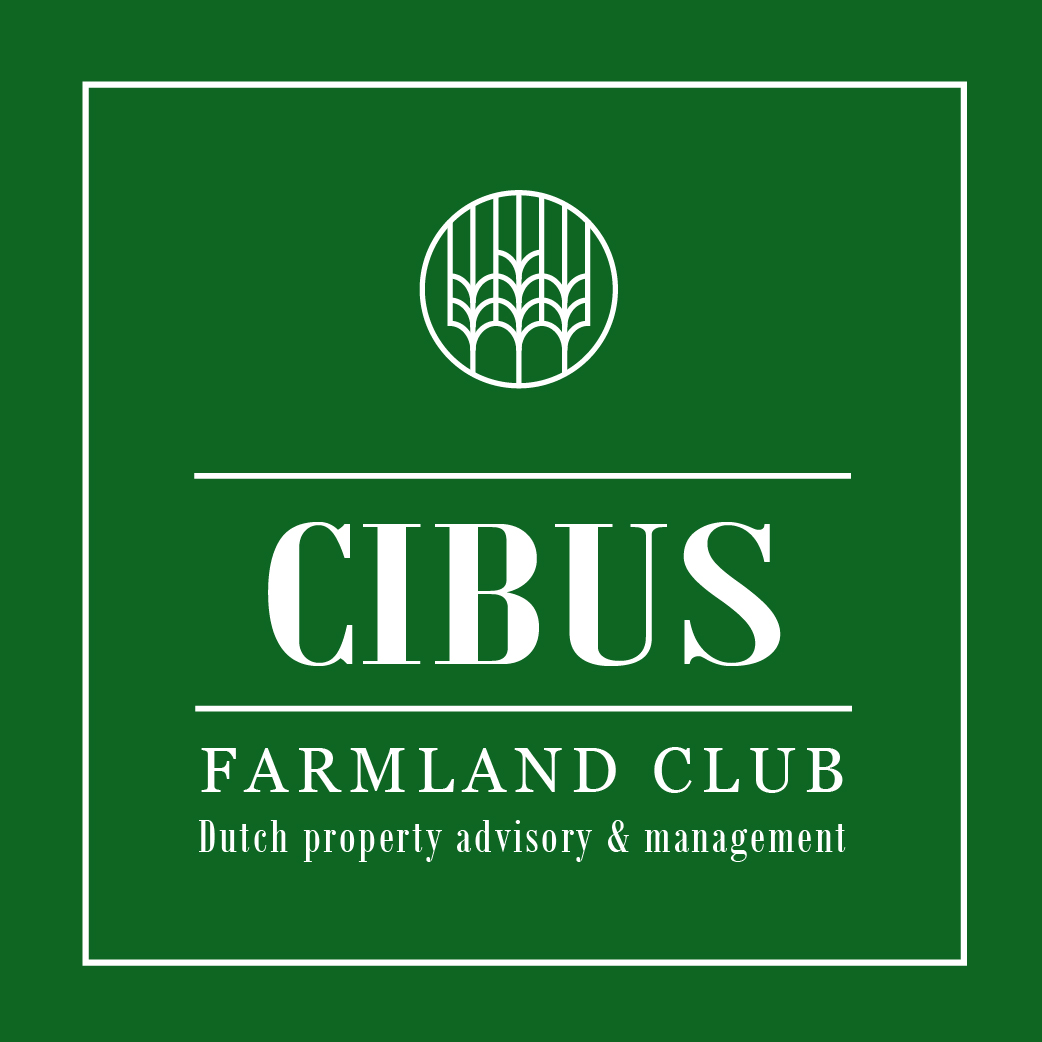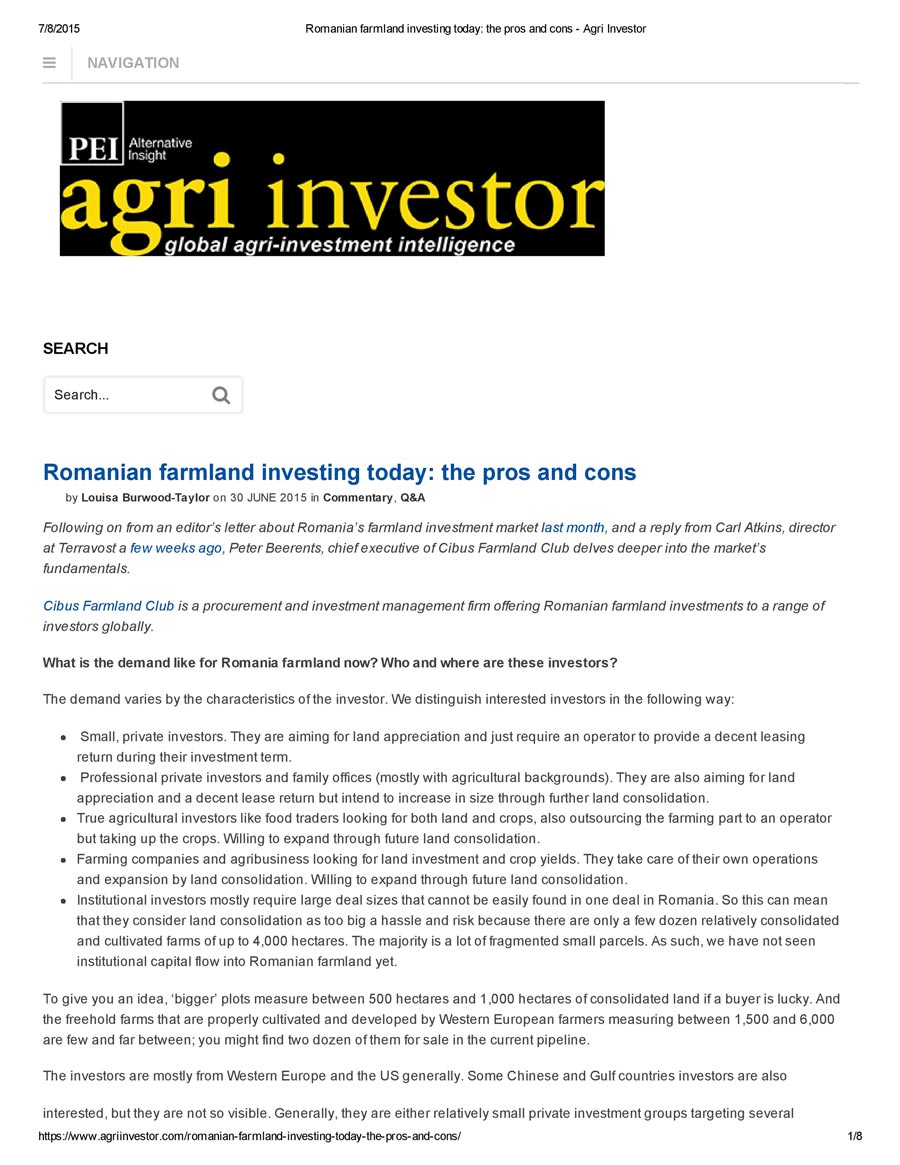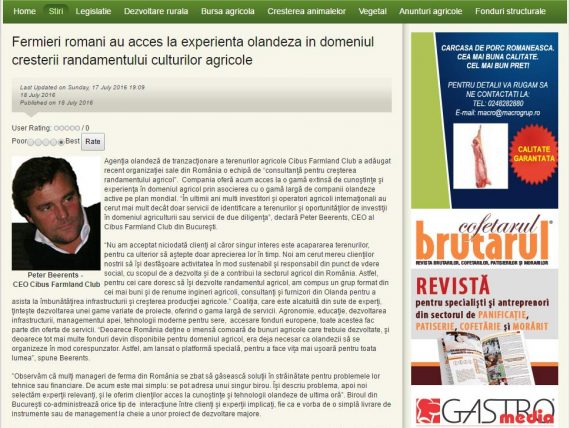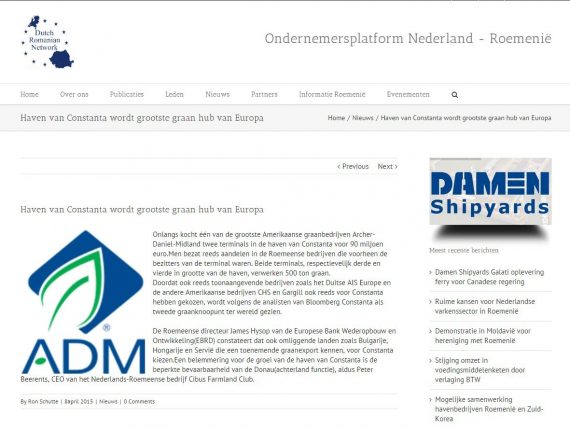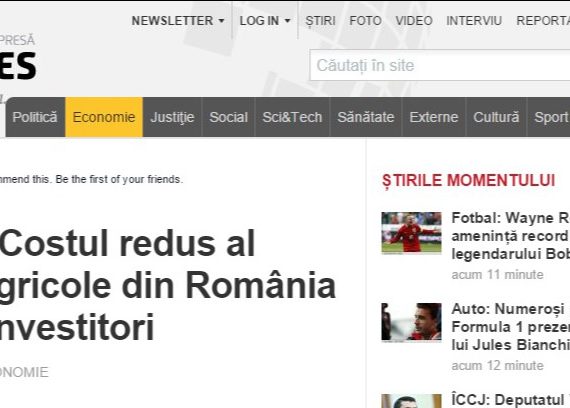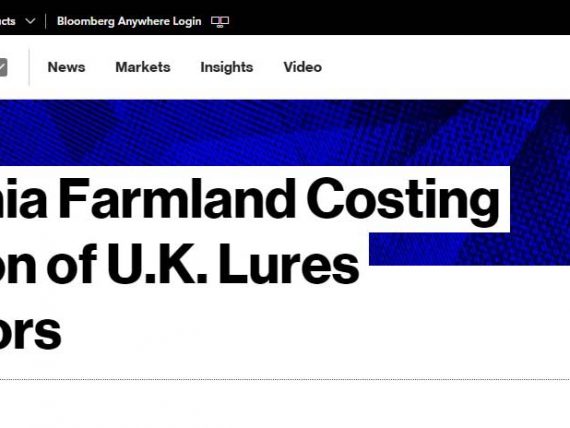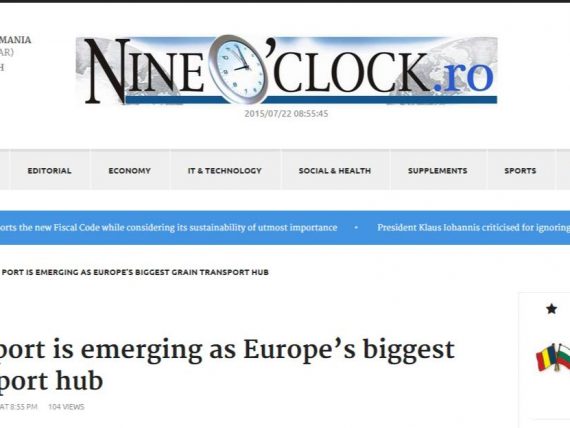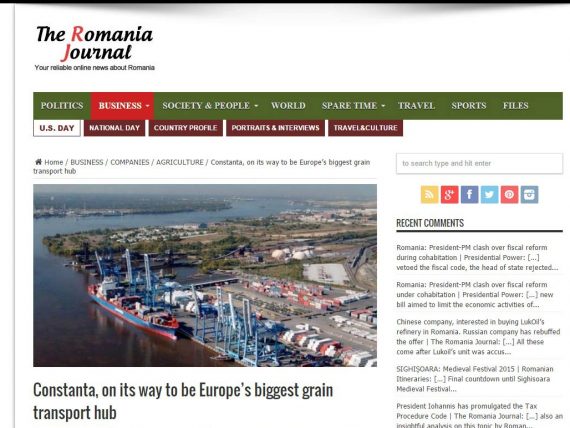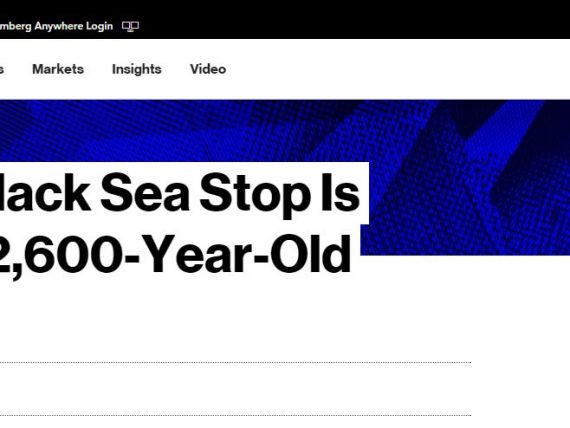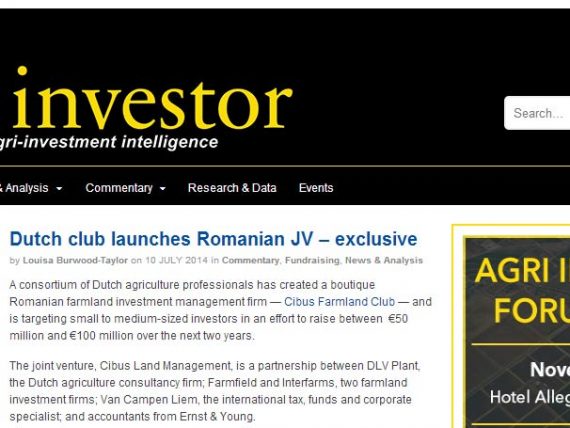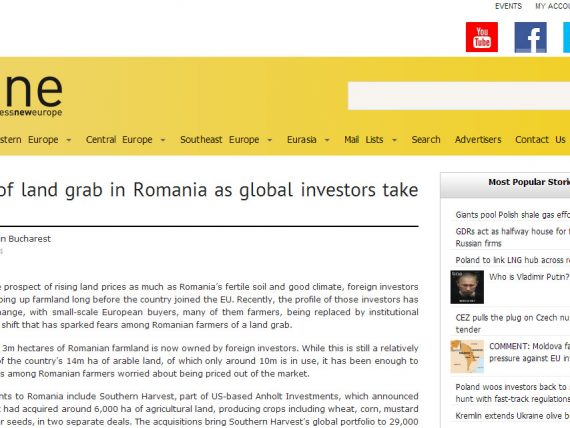Agri Investor
Louisa Burwood-Taylor
June 30, 2015
Link to article
Following on from an editor’s letter about Romania’s farmland investment market last month, and a reply from Carl Atkins, director at Terravost a few weeks ago, Peter Beerents, chief executive of Cibus Farmland Club delves deeper into the market’s fundamentals.
Cibus Farmland Club is a procurement and investment management firm offering Romanian farmland investments to a range of investors globally.
What is the demand like for Romania farmland now? Who and where are these investors?
The demand varies by the characteristics of the investor. We distinguish interested investors in the following way:
- Small, private investors. They are aiming for land appreciation and just require an operator to provide a decent leasing return during their investment term.
- Professional private investors and family offices (mostly with agricultural backgrounds). They are also aiming for land appreciation and a decent lease return but intend to increase in size through further land consolidation.
- True agricultural investors like food traders looking for both land and crops, also outsourcing the farming part to an operator but taking up the crops. Willing to expand through future land consolidation.
- Farming companies and agribusiness looking for land investment and crop yields. They take care of their own operations and expansion by land consolidation. Willing to expand through future land consolidation.
- Institutional investors mostly require large deal sizes that cannot be easily found in one deal in Romania. So this can mean that they consider land consolidation as too big a hassle and risk because there are only a few dozen relatively consolidated and cultivated farms of up to 4,000 hectares. The majority is a lot of fragmented small parcels. As such, we have not seen
institutional capital flow into Romanian farmland yet.
To give you an idea, bigger plots measure between 500 hectares and 1,000 hectares of consolidated land if a buyer is lucky. And the freehold farms that are properly cultivated and developed by Western European farmers measuring between 1,500 and 6,000 are few and far between; you might find two dozen of them for sale in the current pipeline.
The investors are mostly from Western Europe and the US generally. Some Chinese and Gulf countries investors are also interested, but they are not so visible. Generally, they are either relatively small private investment groups targeting several thousands of hectares or large agricultural investment groups targeting at least 10,000 hectares or more.
Are investors more interested in buyandlease than ownandoperate? Why?
The first step is buyandlease until a certain economy of scale of operations can be reached. Afterwards, ownandoperate seems to be the rule. But again, this depends on the type of investor. Ownandoperate will require the most dedicated involvement but lead to the best yields and farmland development.
Buyandlease can provide interesting returns but only provided the investor obtains a solid deal with an experienced and committed operator; this is one of the main challenges to the strategy in Romania. This is why we tend to offer saleandleaseback in investment opportunities only to our clients where the existing farmland owner wants to continue operating his or her land, and/or could even maintain a stake in the land.
Big contract farmers do not get excited about moving staff and machinery for just one small farm of 1,500 or 4,000 hectares, so the best scenario is to look for farmers who wish to cash in on their cultivated, consolidated plots, and lease the land back. The big additional benefit of these kinds of scenarios is that these farmers are well connected in their own region, which contributes a lot to the feasibility of future land swapping and consolidation.
What are the current challenges to investing in Romanian farmland?
– Separating wheat from the chaff when it comes to selecting business partners and agents.
– Securing ownership rights during procurement.
– Finding good cultivated and consolidated farmlands and options to lease surrounding plots with an option to buy, in all cases with a solid and fully committed operator that provides an acceptable annual lease return.
– Pay special attention to drought in the south.
The preemption right of farmers currently farming the land is another big challenge. They can receive pretty easy loans from local banks interested in financing acquisitions. The repayment of the loan is generally guaranteed with the land plot itself and with the future amounts to be received as subsidies by the respective farmer, which is generally accepted by the banks as a very solid guarantee. Such right to receive subsidy is assigned in favour of the bank as collateral purpose.
How has the Ukraine crisis developed in terms of investor sentiment?
I see no impact on investment in Romanian farmland as a result of Ukraine crisis. Although I have heard of the typical American yelling: Peter, Central Europe is off the table here, Putin is already at the border!
But still Romania’s grain exports are on the rise and exports to Egypt have never been bigger. I think most investors understand what it means to be a NATO member and do not underestimate the geopolitical value of Romania. So no real change in investor sentiment here so far.
What opportunities exist to invest in other parts of the agri supply chain?
As a company, we are also focusing on silo storage as an exciting real estate investment opportunity. With food production on the rise throughout the country, we have noticed an enormous growing lack of silo storage in some parts of the country. Poor roads, lack of trucks and a shortage of local storage are leaving many frustrated farmers behind when harvesting. They are forced to sell at low prices. This offers new opportunities, also because the European Union is expected to increase the nonrefundable subsidies for food storage of the 20142020 financing programme, specifically providing exciting extra returns.
What investment structures work best for these types of agri infra assets?
We at Cibus Farmland Club advocate full flexibility to investors, in terms of holding period and taxation. If investors wish to accommodate their assets in a private equity type fund vehicle, or search for coinvestors alongside others, that’s fine with us. We will then advise, establish and manage. If they prefer to hold assets in their own holding entities, we can provide procurement services and carry out the asset management for them. With us, anything goes according to investors requirements. What works best is to determine the best for the investor, depending on his or her characteristics and investment strategy.
How has the agri investment landscape changed since you started working on this?
Apart from land appreciation nothing else has really changed on the farmland side. We have happily noticed more and more professional agriculture investors coming into the sector instead of the privately dreaming individuals that broached the sector a few years ago.
